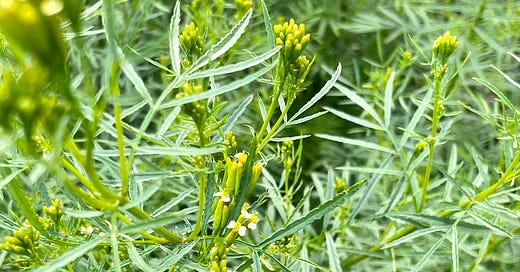I planted way too much huacatay (Tagetes minuta) in my garden in New York. To be honest, I didn’t think it would grow as well as it did. It took off a little slow, but once it got going it hasn’t stopped and now I far more of the Andean herb than I know what to do with and it is still coming. Pest free, it’s one of the few things the deer and racoons haven’t touched in my garden and it makes for a good companion plant with tomatoes and other vegetables.
Huacatay is an Andean herb, often called black mint in English, which to me is a lazy description. It’s not black but dark green, nor is it from the mint family. It’s actually a type of marigold and it grows small yellow flowers. The flavor is distinctive, a sort of cross between tarragon, cilantro, sweet basil and spearmint with a touch of lime.
It’s one of the most widely used herbs in Andean cuisine, giving flavor to countless recipes like seco de cordero, countless stews, grilled meats and ocopa, the hucatay infused version of salsa huancaína. Some might recognize the flavor from ají huacatay, the green sauce that everyone seems to love when served at Peruvian pollo a la brasa restaurants. It can also be dried and used as a tea, infused into an oil, infused into butter, used with grilled vegetables, used as a garnish for causa or blended into fruit juices.
My preferred preparation is perhaps the most common one in the western Andes: Uchucuta. The word simply means ground chiles in Quechua and while there is no exact preparation or set of ingredients, it’s often a combination of fresh chiles and huacatay ground on a stone mortar or batán into a paste. The best use is with roasted potatoes, small ones, cooked whole. Just peel off the skins and dip them in.
RECIPE: Uchucuta
Keep reading with a 7-day free trial
Subscribe to New Worlder to keep reading this post and get 7 days of free access to the full post archives.




